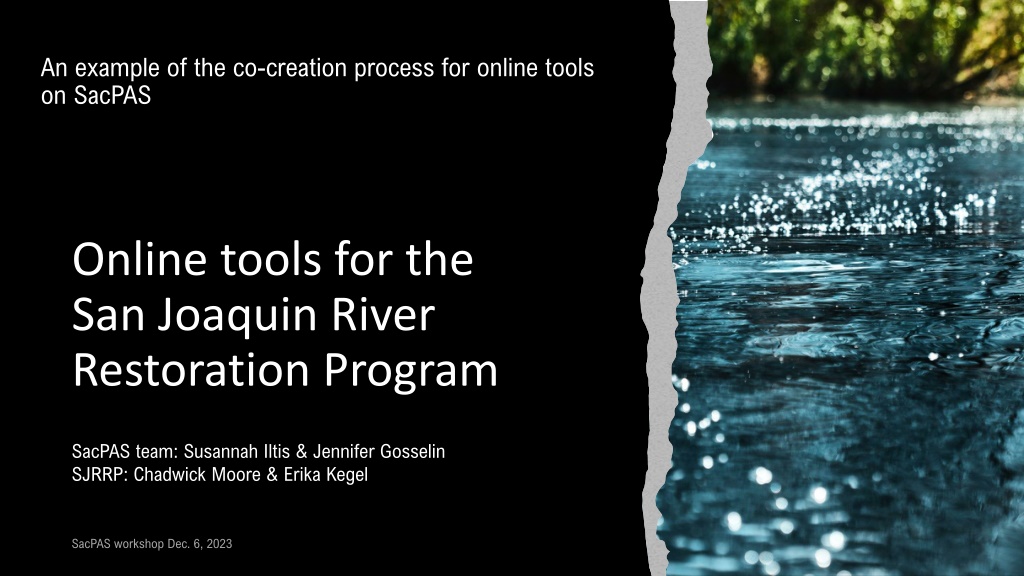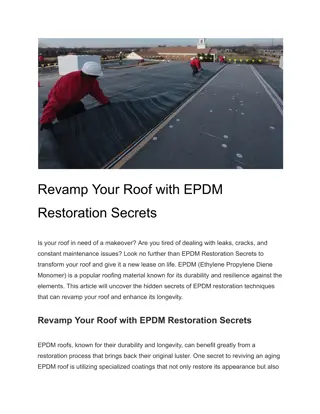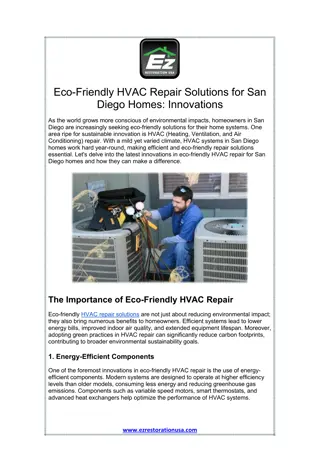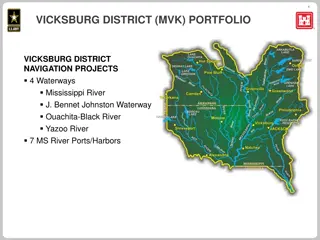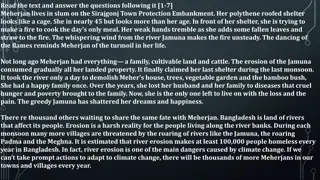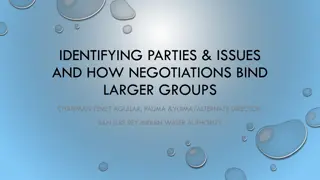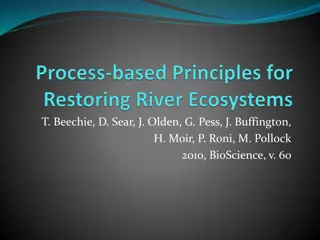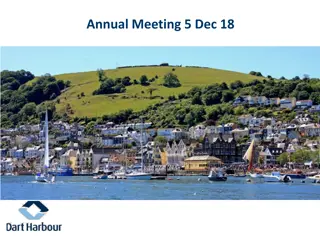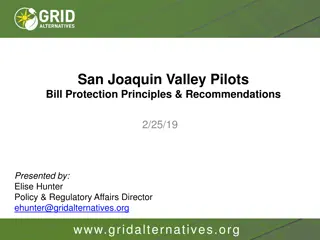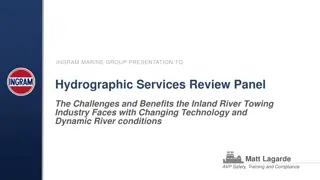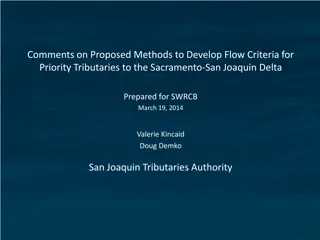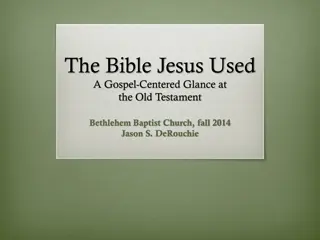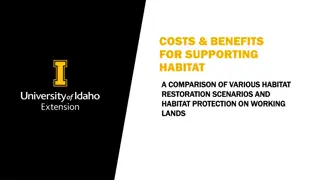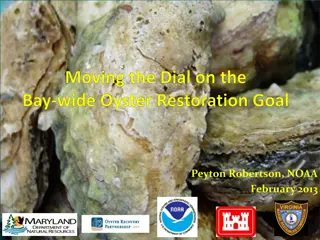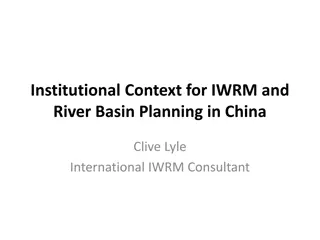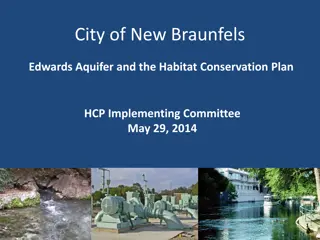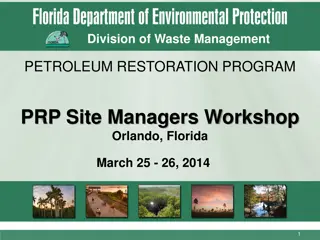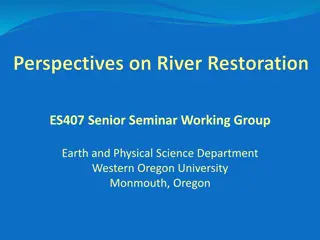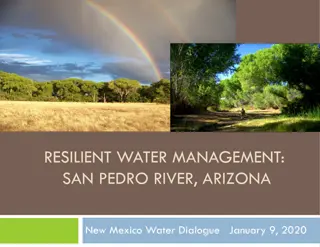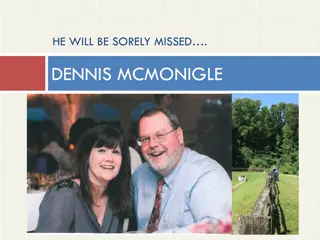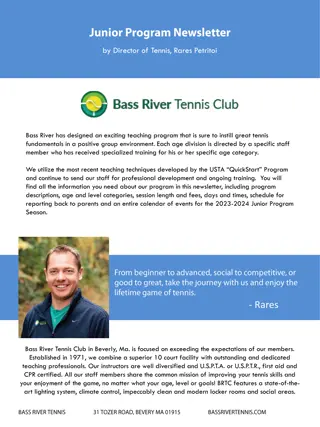Co-Creation Process for Online Tools in San Joaquin River Restoration Program
The co-creation process for online tools in the San Joaquin River Restoration Program involves collaboration between the SacPAS team and SJRRP to meet user needs, automate data, and develop online tools. The program aims to restore fish populations and manage water supply impacts. Through design thinking and initial meetings, the teams discuss data automation, access to data, and handling complex spreadsheets. Follow-up meetings address specific needs related to river restoration flows and water quality objectives. The process emphasizes user requirements and technological solutions for effective restoration efforts.
Download Presentation

Please find below an Image/Link to download the presentation.
The content on the website is provided AS IS for your information and personal use only. It may not be sold, licensed, or shared on other websites without obtaining consent from the author. Download presentation by click this link. If you encounter any issues during the download, it is possible that the publisher has removed the file from their server.
E N D
Presentation Transcript
An example of the co-creation process for online tools on SacPAS Online tools for the San Joaquin River Restoration Program SacPAS team: Susannah Iltis & Jennifer Gosselin SJRRP: Chadwick Moore & Erika Kegel SacPAS workshop Dec. 6, 2023
Background on SJRRP San Joaquin River Restoration Settlement The San Joaquin River Restoration Program (SJRRP) is a comprehensive, long-term effort to release flows from Friant Dam to the confluence of Merced River, implement channel and structural improvements and restore a self-sustaining Chinook salmon population while reducing or avoiding adverse water supply impacts from Restoration Flows. The San Joaquin River Restoration Program is the direct result of the San Joaquin River Restoration Settlement reached in September 2006 by the U.S. Departments of the Interior and Commerce, the Natural Resources Defense Council (NRDC), and the Friant Water Users Authority (FWUA). The Settlement, which followed an 18-year lawsuit, received Federal court approval in October 2006. Federal legislation, the San Joaquin River Restoration Settlement Act, was passed in March 2009 authorizing Federal agencies to implement the Settlement. Two Settlement Goals Restoration: To restore and maintain fish populations in good condition in the main stem of the San Joaquin River below Friant Dam to the confluence of the Merced River, including naturally reproducing and self-sustaining populations of salmon and other fish. Water Management: To reduce or avoid adverse water supply impacts to all of the Friant Division long-term contractors that may result from the Interim Flows and Restoration Flows provided for in the Settlement. https://www.restoresjr.net/
Design Thinking process of co-creating a SacPAS tool Initial meeting: SacPAS to hear: What s needed SJRRP to hear: What s possible SacPAS aims to meet needs of users Data automation Online tools Schedule of development of tools In this presentation, we ll share the design thinking process thus far in tools for SJRRP
Initial meeting with SacPAS Met December 2022 Online Tools related to D-1641? Data and how to access? Data sheet via email Data from pdfs Static url Can SacPAS handle the complex spreadsheets?
Follow-up meetings in July 2023 - present: Request for Two Team Pages Team Page #1: River Restoration Flows Team Page #2: Delta Water Quality (WQ) Identifies location and amount of environmental flows, Friant Dam Delta Restoration Year Flow Volumes (by month and year) Restoration Year Flows (rates by day) Identifies D-1641 compliance and trends; WQ objectives for: Municipal & Industrial beneficial use Agricultural beneficial use Fish and Wildlife beneficial use Salinity (X2) Volumes organized around Restoration Year (Mar-Feb); Flows organized around Water Year (Oct-Sep) Organized around Water Year and seasonal compliance Data derived from SJRRP Operations spreadsheet Data available on CDEC, CVO reports and DWR Delta operations summary Currently focusing on co-creating Team Page #1
Data from spreadsheet downloaded from SJRRP website Operations spreadsheet SacPAS worksheet, introduced into a process that already exists
Initial prototyping on the web Query interface and sample outputs
Design Thinking process of co-creating a SacPAS tool Accuracy of information Improved workflow for data management and automation Initial meeting Understand needs & SacPAS capabilities Given complexity of requests, monthly meetings to help keep the process going Types of graphs Colors (vision deficiency options) User interface Interaction design Aim to meet needs of users Accessibility 508 compliance Debugging New ideas
Hearing from Chad and Erika about their experiences with SacPAS in this process thus far SacPAS is an established source of information for Delta and fisheries management. It made much more sense to build upon SacPAS than to build a separate data product. The presentation of Restoration Flow data is critical to integrating SJRRP operations into Delta operations and protecting those flows. The SacPAS team has a good understanding of CA water while also having the expertise to artfully present the data. We think this combination is essential to this project. We immediately found a good synergy working with the SacPAS team
